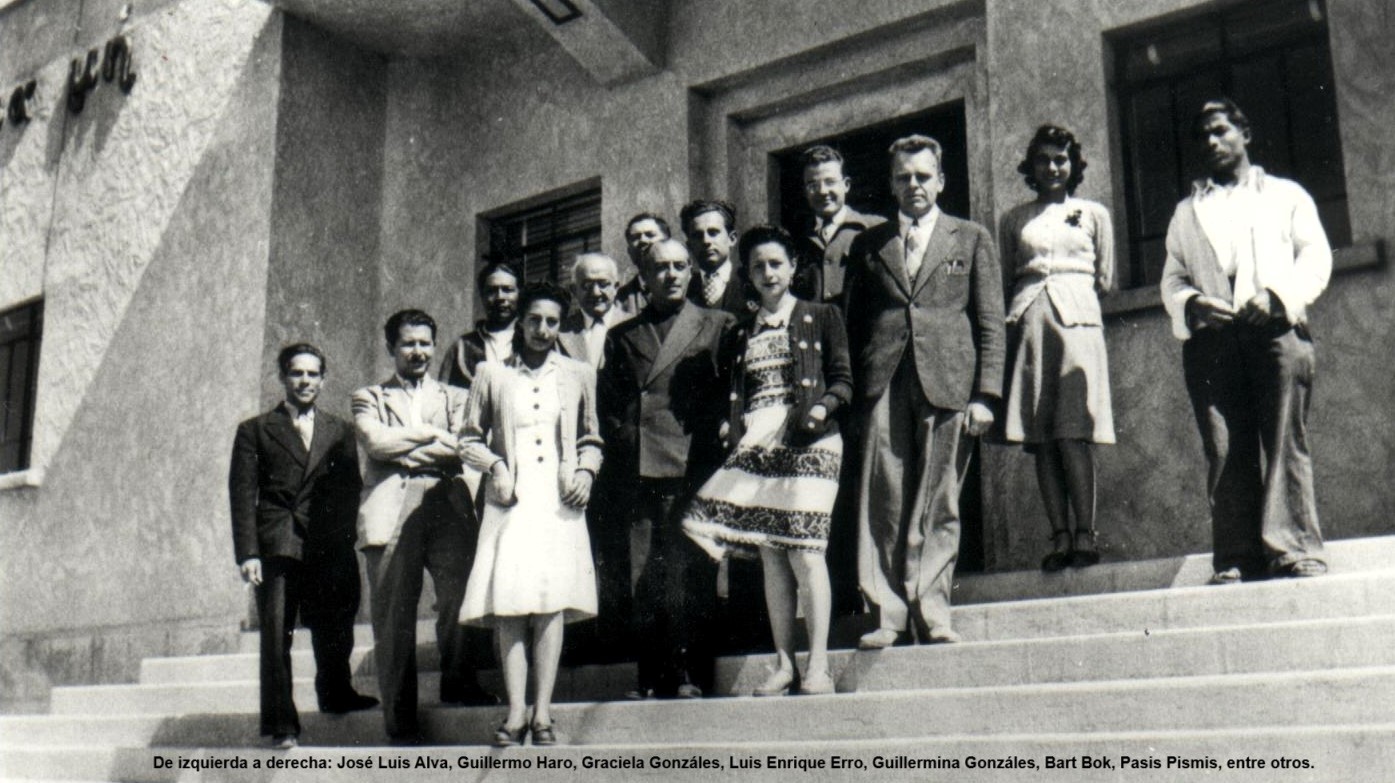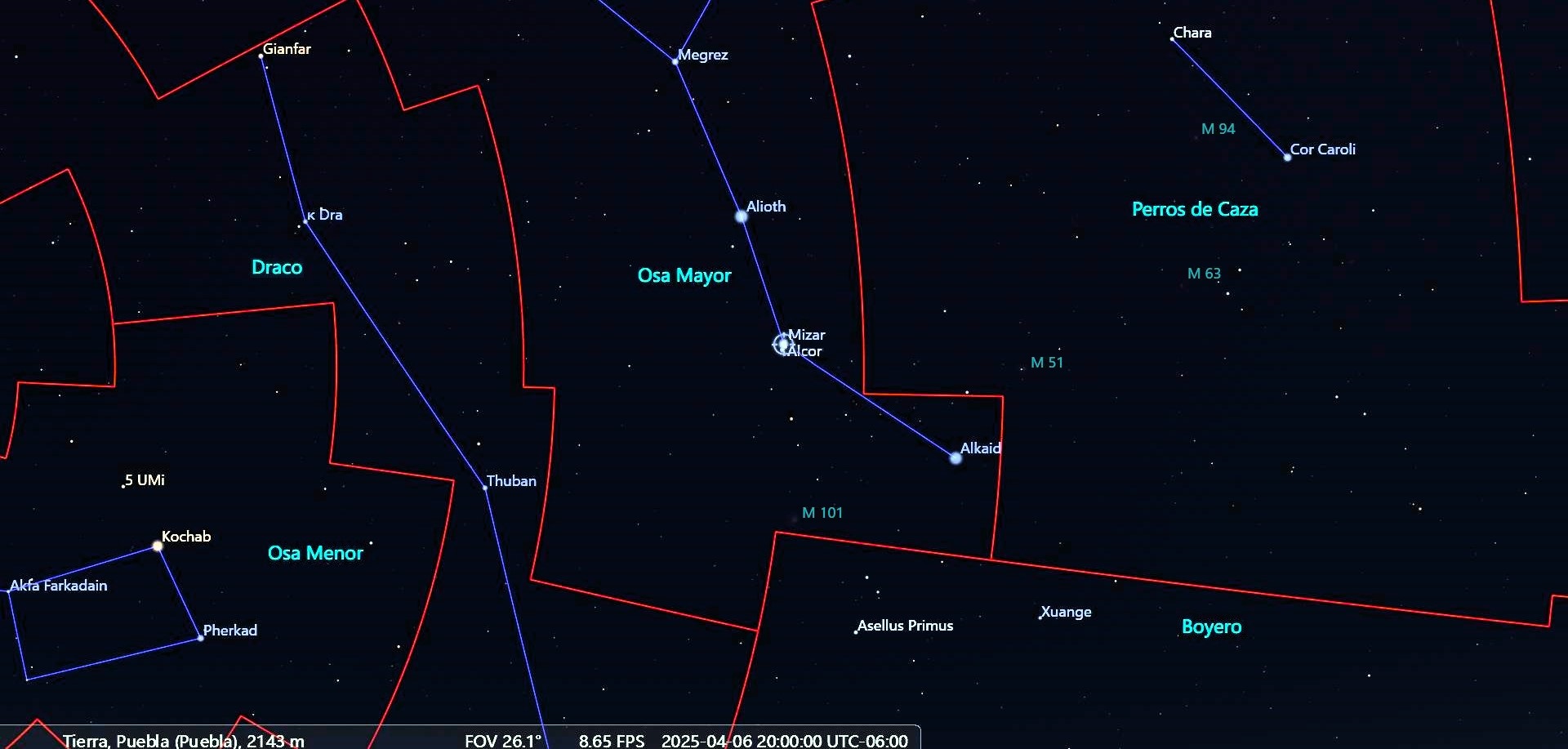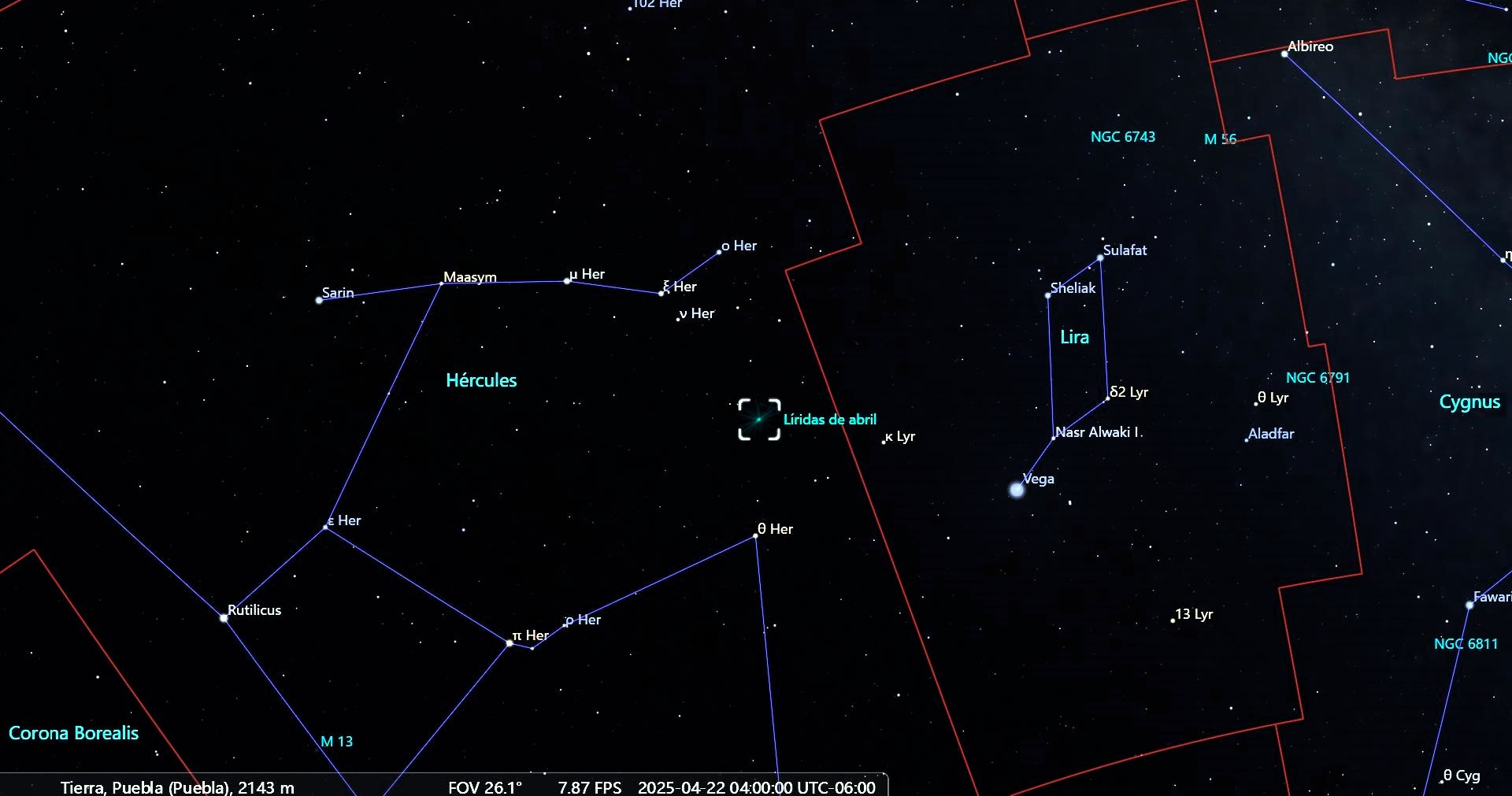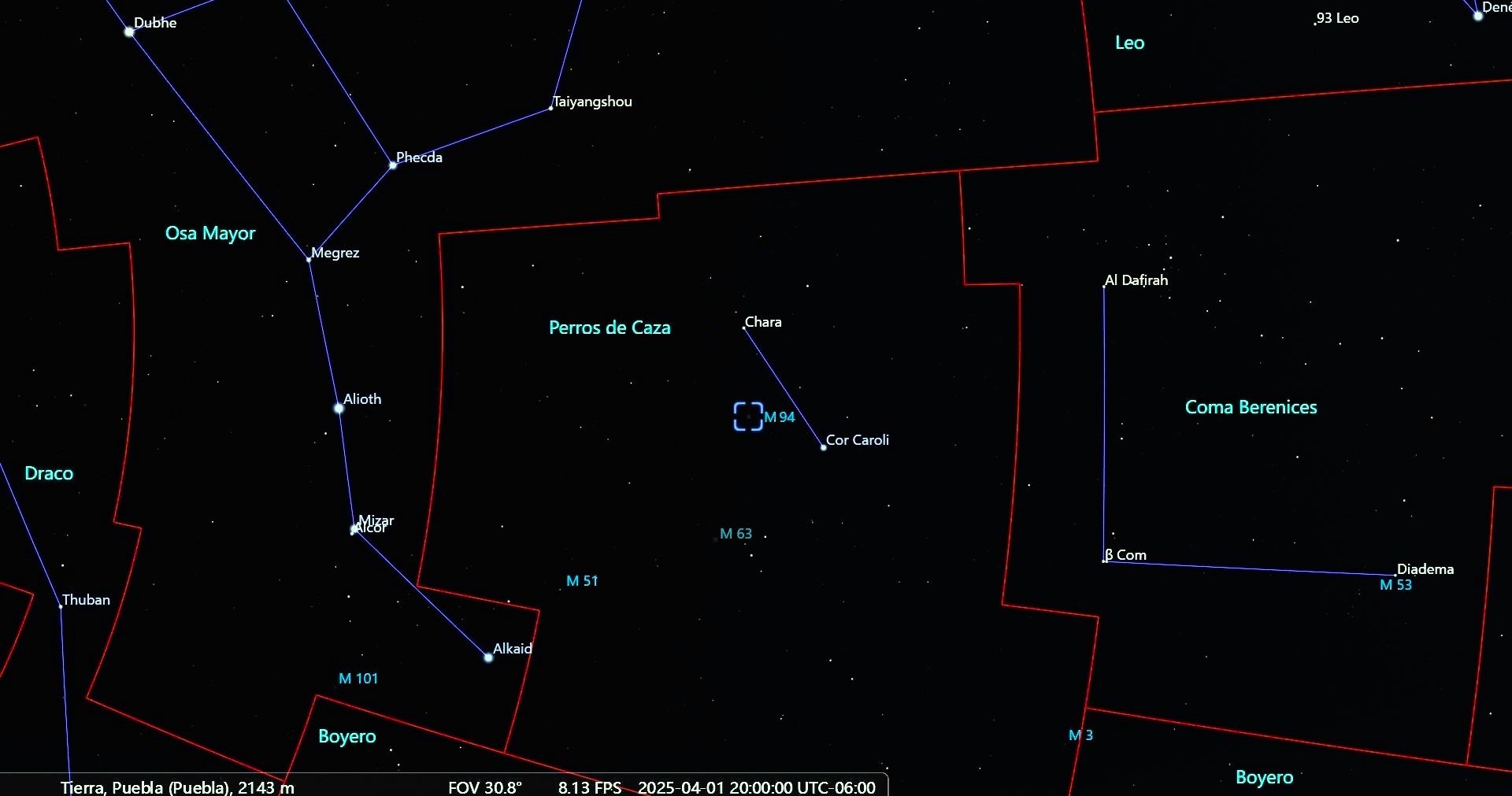Astronomical Events for the Month of April 2025
We've reached the fourth month of the year, and with it, a new opportunity to connect with the cosmos. We begin by remembering Bart Bok, a Dutch-American astronomer closely associated with Mexican astrophysics. We invite you to observe and learn more about the Mizar and Alcor multiple system. The Lyrid meteor shower will amaze us with some fleeting meteors. As a challenge for the month, we have the opportunity to get up close to two Messier objects, M3 and M94. We can't close out this month without introducing you to the phases of the Moon.
Thank you, Dr. Bok, a pillar of astrophysics in Mexico
Much has been said about the beginning of astrophysics in Mexico, with the creation of the Tonantzintla National Astrophysical Observatory (OANTON), which boasted notable figures such as Luis Enrique Erro (founder), Carlos Graeff, Braulio Iriarte, Paris Pishmish, Guillermo Haro, Luis Rivera Terrazas, and Félix Recillas, among others.
However, there was one figure who, even before inaugurating OANTON, was already working hard for its proper functioning: Dr. Bart Bok. In 1941, Bok helped establish the Tonantzintla Observatory, providing his theoretical and practical knowledge for the installation and operation of the Schmidt Camera. His great enthusiasm led him to support the Boyden Observatory in South Africa with its Schmidt Camera in 1950.
One of the greatest astrophysicists, Bartholomeus Jan "Bart" Bok (Netherlands, April 1906; United States, August 1983), focuses his research primarily on the structure and evolution of the Milky Way. Already in the 1940s, he focused on the study of compact, dense clouds of dust and gas present in regions undergoing gravitational contraction for star formation, culminating in the publication of his research in 1947. These regions were later called "Bok Globules."
A Multiple Star System in the Big Dipper
When we look up at the sky and point binoculars or a telescope, it is not uncommon to come across clusters of stars very close together—there may be 2, 3, 4, 100, or thousands of them.
Visible multiple star systems can be divided into two categories: physical multiple star systems, made up of two or more stars, which have the peculiarity of being gravitationally bound; and optical multiple star systems, made up of stars that appear to be very close, but only with respect to the line of sight.
Mizar is believed to have been the first double star discovered in history, in 1650 by Giovanni Battista, perhaps earlier by Benedetto Castelli or Galileo Galilei. Further studies have revealed that it is actually a double-double system, meaning each component is double.
Mizar and Alcor will be well positioned for observation for most of the night, in the direction of the constellation Ursa Major, toward the northern part of the celestial sphere.
Between Two Well-Known Regions
The Lyrid meteor shower can be easily located as it lies between the constellation of Lyra, with its brightest star, Vega, and the constellation of Hercules.
The Lyrid meteor shower will be active between April 16 and 25, peaking on April 22. The maximum observable rate will be up to 18 meteors per hour. Comet C/1861 G1 Thatcher is the source of this shower. It will be visible from the early hours of the 22nd until dawn, toward the northeastern part of the celestial sphere. To enjoy this celestial spectacle, all you need to do is raise your eyes to the indicated region, be warmly dressed, have a good hot drink, soft music, good company, and a lot of patience. The last-quarter Moon will affect the number of meteors that can be seen.
M3, Charles Messier's first original discovery
Messier is well known for his Catalog of Nebulae; His first catalog consisted of 40 objects, with the celestial object cataloged as number 3 being his first self-discovery, made on May 3, 1764. Objects M1 and M2 had already been discovered previously. It was William Herschel, in 1784, who classified it as a globular cluster: thousands of gravitationally bound stars with a compressed and dense core, in the direction of the constellation Canes.
Globular clusters are considered among the oldest objects in the Universe, with ages between 10 and 12 billion years, and M3 is considered one of the oldest. Located 33,900 light-years away and with a magnitude of 6.2, it shines with an intensity 300,000 times greater than that of the Sun, making it an object observable in dark skies with binoculars and small telescopes.
M3 or NGC 5272 contains approximately 500,000 stars, with a total mass of 245,000 solar masses. Its nucleus has a diameter of approximately 180 light-years, perhaps 200, and covers a sphere with a diameter of approximately 760 light-years.
The Ursa Major Group
The Ursa Major Group is made up of three large galaxies: M94, M51, and M63, located, paradoxically, in the constellation of the Canes. This is because the boundaries of the constellations were not yet well defined when they were discovered.
The galaxy M94, Crocodile's Eye, Cat's Eye, or NGC 4736, was discovered in 1781 by Pierre Méchain and cataloged by Messier in the same year. M94 is a spiral galaxy classified as a Sab galaxy, given the intense brightness of its central region, with well-defined arms and intense star formation. It also has a yellowish outer region of evolved stars and globular clusters. Located 16 million light-years away, this galaxy has a magnitude of 9.5 and is located approximately 14.5 million light-years from Earth.
Moon phases (Central Mexico time).
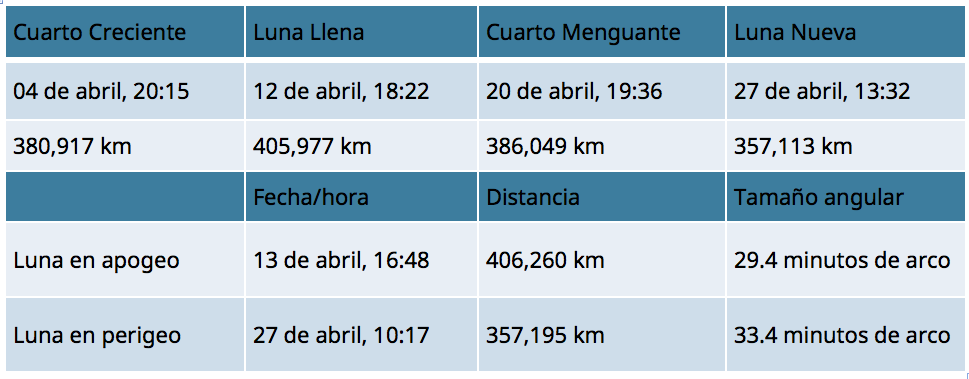
Watch the video of the month in the Youtube Planetario de Cozumel channel: @planetariocozumel655
Contacts:
Dr. Agustín Márquez Limón (amarquez@inaoep.mx)
Coordinación de Astrofísica-INAOE
M.C. Tania Martínez
astronomaplanetariokayok@gmail.com
Red de Planetarios del Estado de Quintana Roo
Dr. Raúl Mújica García (rmujica@inaoep.mx)
Coordinación de Astrofísica-INAOE y Noche de las Estrellas
Luis Enrique Erro # 1, Tonantzintla, Puebla, México, Código Postal 72840, Tel: (222) 266.31.00, difusion@inaoep.mx
This work is licensed under a Creative Commons Attribution-NonCommercial-NoDerivs 2.5 Mexico License.


